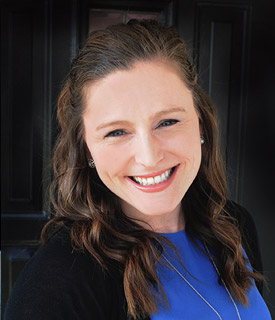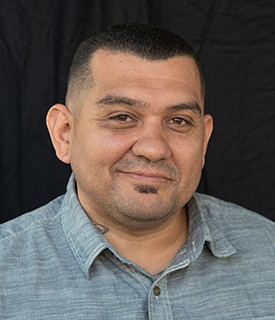We all have highs and lows, which we might call mood swings – but the simple ups and downs of life are different than the contrasting emotional states people with bipolar disorder experience, do not meet the criteria for a clinical diagnosis, and do not require clinical treatment.
Colloquial speech adds some confusion to what bipolar disorder really is, also. When you hear a person explaining their contrasting feelings about a subject, they may say something like “I’m totally bipolar over this,” rather than “I can’t decide how I feel.” It’s similar to when someone is particular about something and says “I’m totally OCD over this,” rather than “I have to get this right.”
In both cases, the speaker makes their point, but the casual use of clinical terms in a non-clinical context can cause people in the general public to downplay, misunderstand, or minimize the experience of people with a serious mental illness. Make no mistake: obsessive-compulsive disorder (OCD) and bipolar disorder (BD I &II) are serious mental illnesses, and for the people who have them, they’re no joking matter.
In this article, we’ll offer an overview on bipolar disorder diagnosis and treatment. We’ll share the definition, prevalence, symptoms, warning signs, diagnostic procedures, and the latest evidence-based treatments available.
What is Bipolar Disorder?
For decades, bipolar disorder had another name: manic-depressive disorder, or manic depression. The psychiatric community considered bipolar disorder a mood disorder, in the same general category as major depressive disorder (MDD). However, the most recent revision of the Diagnostic and Statistical Manual of Mental Disorders (DSM-5) placed the disorder in its own category and organized the diagnosis into three types. These include:
- Bipolar I
- Bipolar II
- Cyclothymic disorder
We’ll explain those types in a moment. First, a general definition from the American Psychological Association (APA):
“Bipolar disorder is a serious mental illness in which common emotions become intensely and often unpredictably magnified. Individuals with bipolar disorder can quickly swing from extremes of happiness, energy, and clarity to sadness, fatigue, and confusion. These shifts can be so devastating that individuals may consider suicide. All people with bipolar disorder have manic episodes—abnormally elevated or irritable moods that last at least a week and impair functioning. But not all become clinically depressed.”
That’s a good narrative definition/explanation of BD and the impact it can have on an individual. Each type involves some degree or combination of manic, hypomanic (manic episodes less intense than typical BD-associated mania), and depressive episodes. Let’s take a closer look at the three types of bipolar disorder:
- Bipolar I includes manic episodes, depressive episodes, or mixed episodes. To meet diagnostic criteria, these episodes:
- Persist for 7 days or longer
- Have a negative, disruptive impact on sleep
- Disrupt typical daily activity
- May or may not include depressive episodes
- Bipolar II includes depressive episodes, hypomanic episodes, or mixed episodes. Both types of episodes are generally less severe, intense, and disruptive than those associated with BD-I. Experts refer to the less intense manic episodes as hypomanic.
- Cyclothymic disorder includes recurring depressive and hypomanic episodes that do not meet the threshold of duration or intensity to meet the criteria for the depressive, manic, and hypomanic episodes that define bipolar I and/or bipolar II.
That’s the official definition of bipolar disorder. As you can see, it’s more than mood swings. It involves intense highs, which can lead to risky behavior, and intense lows, which can lead to severe depressive states. We’ll explain these contrasting states below. First, let’s take a look at the prevalence of bipolar disorder in the U.S. and worldwide.
Bipolar Disorder: Facts and Figures
The World Mental Health Survey Initiative shows the following worldwide prevalence of bipolar disorder among adults over age 18:
- Any diagnosis during lifetime: 2.4%
- That’s around 123 million people
- Diagnosis during past year: 1.5%
- That’s around 77 million people
In the U.S., the National Institute on Mental Health (NIMH) shows the following prevalence of bipolar disorder among adults over age 18:
- Any diagnosis during lifetime: 4.4%
- That’s around 10 million people
- Diagnosis during past year: 2.8%
- That’s around 6.5 million people
- Past-year rate for females and males is almost identical:
- Females: 2.8%
- Males: 2.9%
- Diagnosis of BD with moderate impairment: 17.1%
- Diagnosis of BD with severe impairment: 82.9%
Now let’s look at the prevalence of bipolar disorder among adolescents age 13-18:
- Any diagnosis during lifetime: 2.9%
- That’s around 1.2 million teens
- By gender:
- Females: 3.3%
- Males: 2.6%
- With severe impairment: 2.6%
- Prevalence increases with age:
- 13-14: 1.9%
- 15-16: 3.1%
- 17-18: 4.3%
- Experts estimate up to 1/3 of teens diagnosed with major depressive disorder (MDD) are misdiagnosed, and have BD-I, BD-II, or cyclothymic disorder
Patients diagnosed with bipolar disorder also show increased prevalence of co-occurring substance use disorder (SUD), compared to people without bipolar disorder. Here’s the data:
Bipolar I:
- 60% report alcohol use disorder (AUD) during their lifetime
- 43% report substance use disorder (SUD) during their lifetime
Bipolar II:
- 48% report alcohol use disorder /substance use disorder (AUD/SUD) during their lifetime
- 39% report AUD during their lifetime
- 21% report SUD during their lifetime
Finally, let’s look at when the symptoms of bipolar appear most often, called the age of onset:
- Typical onset: 25
- Adolescent onset: 14-18
- Early onset (rare): 9-12
- Late onset (rare): 50+. Late onset BD is often associated with chronic disease or serious medical event, such as stroke or aneurysm.
As we can see, millions of people around the world have bipolar disorder. The disorder can appear in anyone: adolescents, adults, men, and women. Although the average age of diagnosis is age 25, evidence indicates there’s often a lag of around 9 years between the first onset of symptoms and diagnosis of bipolar disorder. Considering this alongside anecdotal evidence from adults with BD, it’s safe to say that first symptoms of BD most often appear between the ages of 14 and 21.
The Common Signs and Symptoms of Bipolar Disorder
It’s important to understand the signs and symptoms of mental illness in yourself and others in order to get an accurate, early diagnosis, and seek treatment sooner, rather than later. When considering mental health symptoms, remember two important rules of thumb:
- Drastic changes in mood, manner, and behavior are warning signs. They may indicate a mental illness such as bipolar disorder or substance use disorder. In any case, extreme changes mean one thing: pay attention and be prepared to take action.
- Feelings, patterns of thought, or emotional states that appear and fade quickly, do not return regularly, and do not cause disruption are typically not symptoms of a mental health disorder, but rather, the typical ups and downs of life.
- Symptoms of depression also include things like anger and irritability, especially in teens and young adults. Sadness and low mood are not the only symptoms of depression.
Experts divide the symptoms of bipolar disorder into two categories: mania/hypomania and depression/depressive symptoms. We’ll explain these in detail, starting with mania and hypomania.
Bipolar Disorder Symptoms: Mania and Hypomania
Manic episodes are characterized by opposing emotions: elation/euphoria/high mood or irritability/anger/intensity. In adolescents, anger is more common that euphoria. In addition, a person in a manic episode may not sleep – and may not feel they need to sleep – for days on end. During manic episodes, people with bipolar disorder are more likely to engage in risky behavior. Recognizing these bipolar disorder symptoms is essential for accurate diagnosis and appropriate treatment.
Additional symptoms of manic episodes include, but are not limited to:
- Tantrums/eruptions/extreme anger
- Fast, clipped speech
- Racing thoughts
- Unwanted thoughts
- Extremely, uncharacteristically high energy
- Sleep problems
- Concentration problems
- Excessive optimism
- Extreme multitasking
- Heightened sense of personal importance/influence
- Excess risk-taking, such as driving too fast all the time
- Increased alcohol or substance use
- Risky sexual activity
- Irresponsible behavior, such as spending sprees
- Aggressive behavior
- Hallucinations, i.e. seeing and hearing things that aren’t there
- Delusions, i.e. beliefs that have no basis in reality
Mania and manic episodes may be tricky at first. The person experiencing them often feels good – great, even. Excessively so. They’re most often keyed up, excited, excitable, and experiencing what feels to them like a natural high. However, even though think nothing is wrong and, in contrast, everything is more right than ever, it’s clear to those around them that everything is definitely not okay. That’s one hallmark of a manic episode: at first, they’re obvious to everyone but the person having one.
Bipolar Disorder Symptoms: Depression/Depressive States
Depression and depressive states most often include persistent sadness, physical problems such as headaches or nausea, extremely low mood, lack of energy, and persistent fatigue, as well as withdrawal from family, friends, and loved ones. Like identifying manic symptoms, recognizing these bipolar disorder symptoms is essential for accurate diagnosis and appropriate treatment.
Additional symptoms of depression/depressive states associated with bipolar disorder include, but are not limited to:
- Constant sense of helplessness/worthlessness
- Extreme reactivity to any type of rejection
- Persistent hopelessness
- Recurring/constant episodes of crying
- Persistent sense of emptiness
- Low self-esteem
- Decreasing self-confidence
- Sleeping too much or too little
- Drastic changes in eating habits or appetite
- Tantrums
- Apathy
- Restlessness
- Problems completing tasks at school or work
- Decreased motivation
- Withdrawal/declining interest in hobbies or loved activities
- Problems with concentration
- Problems making decisions
- Anger/irritability
- Drop in work or academic performance
- Forgetting/failing to attend to the basic of personal hygien
- Suicidal ideation: thinking about, talking about, or making plans to attempt suicide.
*NEVER IGNORE SUICIDAL IDEATION. IF YOU OR A LOVED ONE IS AT IMMINENT RISK OF HARM, CALL 911, GO THE EMERGENCY ROOM, OR DIAL 988 FOR THE NATIONAL MENTAL HEALTH EMERGENCY LINE*
There’s another thing to remember about symptoms of mental health disorders – and it’s something that makes an accurate diagnosis a real challenge. We all experience many of the symptoms on the list above at some point in our lives. However, the extreme emotional states associated with bipolar last for several days at a time, and in some cases for weeks. They may appear one at a time, or clusters may appear simultaneously. The triggers are different for everyone: stress may cause the onset of a manic episode, and a significant disappointment or frustration may cause the onset of a depressive episode.
The main thing to understand is that mental health symptoms are persistent, recur, and cause significant disruption. The person experiencing them has a hard time – or cannot – resolve or move past these emotions themselves. On the other hand, a person experience typical mood changes can move past these states, and resolve their issues without the need for professional support.
Bipolar Disorder: Correct Diagnosis Ensures Appropriate Treatment
Diagnosing bipolar disorder can be complex. Diagnosis relies on the accurate detection of the symptoms above. To meet criteria for BD, manic episodes must last for at least one, include or three or more of the symptoms above, and cause significant impairment in daily life. Hypomanic episodes are less severe, must last at least 4 days, and do not cause the same level of impairment as manic episodes.
To meet criteria for bipolar disorder, depressive episodes must last at least two weeks. The patient must show five or more of the symptoms on the list above. The symptoms must cause significant disruption, and not be explained by grief or bereavement.
For a diagnosis of BD-I, an individual must show a “distinct period of mood disturbance” that meets the criteria for mania described above. The manic episode must cause severe disruption, and must not be explainable by a medical condition, another mental health disorder, or substance misuse. BD-I may or may not include depressive episodes.
For diagnosis of BD-II, an individual must show a “distinct period of mood disturbance” that includes one or more hypomanic episodes and one or more depressive episodes that disrupt life/social/occupational function, are observable by others, are uncharacteristic of the individual, and cannot be explained by a medical condition, another mental, health disorder, or substance misuse.
For a diagnosis of cyclothymic disorder, a patient must experience repeating depressive and hypomanic episodes that are less severe, less intense, and of shorter duration than those associated with BD-I and /or BD-II.
Bipolar Disorder Diagnosis and Treatment: Traditional and New Approaches
Evidence-based treatment for bipolar disorder most often include a combination of medication, psychotherapy, lifestyle changes, complementary supports, and in some cases, brain stimulation therapies.
Medication for bipolar disorder:
- Antidepressants
- Mood stabilizers
- Antipsychotics
- Ketamine
Psychotherapeutic techniques for bipolar disorder:
- Cognitive behavioral therapy (CBT)
- Diagnostic behavior therapy (DBT)
- Prolonged exposure (PE) therapy
- Cognitive remediation therapy (CRT)
- Acceptance & commitment therapy (ACT)
- Solution-focused brief therapy (SFBT)
Lifestyle changes for bipolar disorder:
- Healthy eating
- Exercise
- Sleep hygiene
- Stress management
Complementary support for bipolar disorder:
- Mindfulness
- Meditation
- Yoga/tai chi
- Expressive therapies (music, art, dance, visual art, writing)
Brain stimulation therapies for bipolar disorder:
- Electroconvulsive therapy (ECT)
- Transcranial magnetic stimulation (TMS)
A treatment center will create a treatment plan only after a comprehensive biopsychosocial assessment confirms an accurate diagnosis of bipolar disorder. A high-quality treatment center will determine exactly what type of bipolar disorder is present, then determine the proper course of action. Since every case is different, every treatment plan for bipolar disorder is different.
The Diagnosis Determines the Treatment
As we mention above, there’s often a significant lag time between the onset of symptoms and diagnosis of bipolar disorder. Sometimes this lag can last months, and in other cases, it can take years to arrive at an accurate diagnosis and design an appropriate treatment plan.
Ultimately, some type of blood or genetic test would be ideal. Here’s how Dr. Benjamin Goldstein of the University of Toronto describes the need in an article from the APA:
“The field needs to move toward something similar to what we see in heart disease, where we don’t wait for the full manifestation of the illness before acting.”
The APA article continues:
“Part of the problem is that with their diverse range of states and symptoms, bipolar spectrum disorders can look like major depression, anxiety, psychosis, substance use disorders, autism spectrum disorders, ADHD, personality disorders, or conduct disorders.”
We’ll edit that statement: part of the challenge is the diverse range of states that look like other disorders. We know it’s possible to arrive at an accurate diagnosis – because we do it every day. We also know that with evidence-based treatment, we can help patients manage their symptoms and live a full and fulfilling life – because we do it every day.

 Kimberly Gilkey, RADT-1
Kimberly Gilkey, RADT-1 Timothy Wieland
Timothy Wieland David Abram
David Abram Mark Melden, DO/DABPN
Mark Melden, DO/DABPN Jeffrey Klein
Jeffrey Klein Nathan Kuemmerle, MD
Nathan Kuemmerle, MD Laura Hopper, Ph.D.
Laura Hopper, Ph.D. Rebecca McKnight, PsyD
Rebecca McKnight, PsyD Milena Dun, PhD
Milena Dun, PhD Brieana Turner, MA, LMFT
Brieana Turner, MA, LMFT Brittany Perkins, MA, LMFT
Brittany Perkins, MA, LMFT Joanne Talbot-Miller, M.A., LMFT
Joanne Talbot-Miller, M.A., LMFT Alexis Weintraub, PsyD
Alexis Weintraub, PsyD Kathleen McCarrick, MSW, LSW
Kathleen McCarrick, MSW, LSW Christina Lam, N.P.
Christina Lam, N.P. John P. Flores, SUDCC-IV-CS, CADC II
John P. Flores, SUDCC-IV-CS, CADC II David Dalton, Facility Operations Director
David Dalton, Facility Operations Director Amy Thompson
Amy Thompson Kelly Schwarzer
Kelly Schwarzer Jovanna Wiggins
Jovanna Wiggins Alexandria Avalos, MSW, ACSW
Alexandria Avalos, MSW, ACSW Michelle Ertel
Michelle Ertel Emily Skillings
Emily Skillings Amanda Irrgang, Registered Dietitian Nutritionist (RDN)
Amanda Irrgang, Registered Dietitian Nutritionist (RDN) Gianna Melendez
Gianna Melendez Jodie Dahl, CpHT
Jodie Dahl, CpHT Jordan Granata, PsyD
Jordan Granata, PsyD